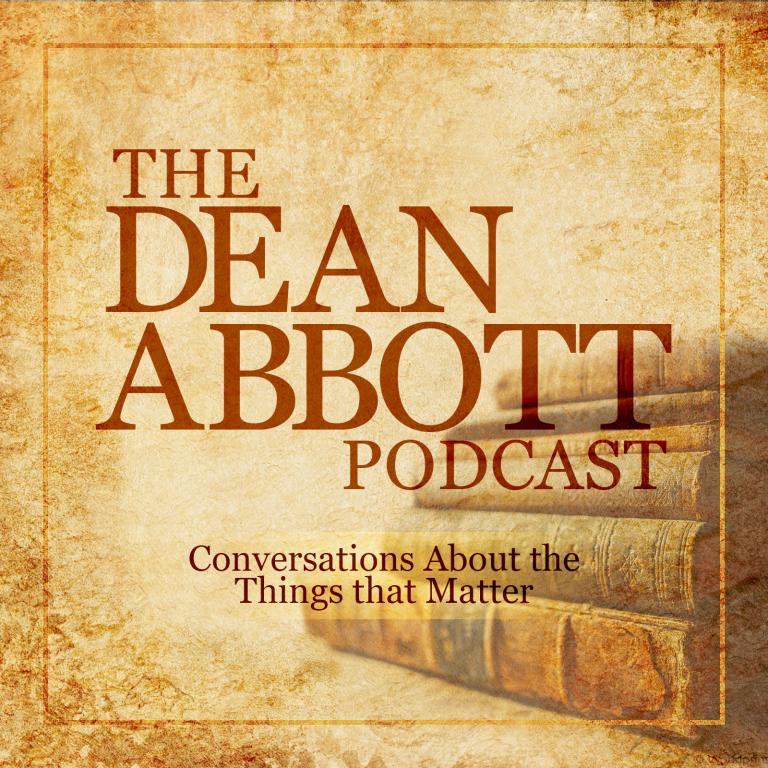
I never got to work at L’abri , and I blame John Kerry.
See, when I was younger, I aspired to a place on staff at one of the branches of that network of residential study centers founded by Francis Schaeffer.
In 2004, I spent a term at the Massachusetts L’abri. Almost immediately, tensions arose between me and the other students and staff. That fall, George W. Bush was seeking re-election, and Kerry was trying to stop him. We discussed the politics frequently. The atmosphere was very pro-Kerry.
I was not pro-Kerry. I was no ardent supporter of George Bush, but Kerry’s leftism, especially his vigorous support of abortion, made the thought of supporting him noxious. Many of the Kerry cheerleaders I encountered at L’abri were evangelical Christians who, in spite of Kerry’s devotion to abortion rights, believed their support for him was a mark of superior virtue.
The intervening years have clarified for me how that could be. Understanding what was happening there requires looking at the big picture.
Two Responses
The cultural shift that dislodged traditional Christianity from its place as the foundation of American culture has provoked a number of responses among believers. Though these responses may seem infinitely varied on the surface, the bulk of them can actually be categorized under four headings: accommodation, appeasement, acceptance and aggression.
This applies mostly to American protestants. These responses are likely mirrored in the Catholic church, but someone who knows more can say whether that is accurate. I also exclude fundamentalists whose approach to the surrounding culture is so hostile that shifts within it are irrelevant to them.
With those provisos, I offer the following typology for understanding Evangelical reactions to traditional Christian belief becoming a mark of low status:
1. The Accomodators:
These are evangelicals who have attempted to avoid a loss of social status by accommodating traditional Christian belief to the demands of the prevailing liberal order. They seek to resolve tensions between Christian and liberal orthodoxies by changing the content of the Christian one. Many don’t call themselves liberals. The label they used a decade ago was “emerging church.” The preferred label now is “post-Christian” or “progressive evangelical.” Many of their leaders are highly visible and identifiable. Much has been said about these people elsewhere. I won’t belabor the point here.
2. The Appeasers:
That the folks I encountered at L’abri should fall into this category is unsurprising given that it represents the dominant strategy within evangelicalism. The appeasers’ project is to demonstrate to the liberal order that traditional Christian belief is not really an impediment to full membership in elite levels of the current cultural hierarchy. They seek to avoid the taint of low social status by emphasizing those aspects of the Christian message most easily interpreted as calls for “social justice.” Thus, this group has tended to be among the loudest of the NeverTrump evangelicals.
Unlike the accommodators, the appeasers want to maintain traditional Christian orthodoxy. Yet, they tend to assume that society is inherently progressive and that the left represents informed and considered opinion. Their question is “how far left can I go and still be a traditional evangelical?”
The blogger at Reformation 500 captured the dynamics at play within this group in this fascinating post.
The first of these approaches has failed. The second is failing now. The collapse of Protestant Liberalism showed where the accommodationist approach ends. In retrospect, it’s clear that the emerging church movement was little more than an attempt to revivify a movement that had long ago met its well-deserved end. It’s no wonder that one of the most visible leaders of the “progressive Christian” movement now makes her home in that slowly vanishing ghost of a denomination, the Episcopal Church which, in its day, was the most energetic advocate of the accommodationist approach.
The appeasement approach, while not dead yet, is dying. Trump’s victory proves this. As the blogger linked above points out, the resounding criticism of Trump from most evangelical leaders did nothing to dissuade their supposed followers from casting their ballots for him. The shock of Trump’s election could have been, had they a willingness to see, evidence that those they imagined looking to them for leadership had long ago grown tired of the show.
The appeasers dominate evangelicalism now, but they will fade. At some point, they will see that their attempts to curry favor with liberal elites have failed to garner an iota of real respect. They will find themselves caught between the disdain of those they courted and the distrust of those they ostensibly led.
Two More Responses
Fortunately, two strategies remain. We have yet:
3. The Acceptors
This is the The Benedict Option. Mr. Dreher’s book gets caricatured as a call for traditional Christians to retreat from society. This caricature of the book is easily dispelled by actually reading it. Rather than a call to abandon society, the book is a call to regroup, to withdraw from society only when doing so is necessary for traditional Christians to be about the business of building thick communities capable of passing on the faith to generations beset by a hostile and invasive culture.
This strategy is based on accepting that traditionalists and social conservatives lost the culture war. It encourages traditional Christians to accept their low social status and to turn toward one another for mutual aid and support during what the acceptors anticipate will be a dark future.
4. The Aggressors
These are the bad boys of conservative Christianity. They are Protestant, Catholic and Orthodox. This group is small but growing. They represent a strategy untried in recent decades, certainly among evangelicals. This group also accepts the low social status that traditional Christian belief confers but, like bad boys everywhere, they revel in it, seeking to invert their position as the ostracized outsider and make it cool.
In large part, they succeed, and that success accounts for their growth. This group tends to be distrustful of “dialogue” knowing how often those who want to make the church more accommodating to the modern left have opened their offensives with that word.
Instead of engaging in dialogue, they post funny memes on Twitter. They confront leftists on Facebook, baiting their interlocutors into revealing their didactic, controlling, finger-wagging interiors. They don’t debate. They make their opponents look absurd while making themselves look brave. Thus, they attract a following. They have a far better understanding of social dynamics than any of the other groups.
Their leaders are less visible. Many post under anonymous accounts. Others write for right-wing websites that add to the movement’s momentum. This approach offers the most hope for traditional Christians seeking to create cultural space for themselves.
A combination of these final two strategies is necessary for Christians to “engage the culture” fruitfully. The aggressors must be careful not to criticize the acceptors too harshly. A measure of withdrawal and inward focus is necessary. Aggressors should support and encourage those efforts so long as they don’t entail needlessly ceding more ground to the liberal order.
Acceptors must not fear the aggressors. Acceptors must understand that they and the aggressors are working for the same goal: a society with more space for Christian Traditionalists. Acceptors will have to distinguish between what is only bad boy style and what is real sin.
Whatever happens, the future for traditional Christians will be complicated. This will be especially true when the appeasers begin to fall from their perches and power vacuums open within the movement. But, with a bit of awareness, planning and bravery these changes may become opportunities we cannot now imagine and the future a place where the faith can flourish.










